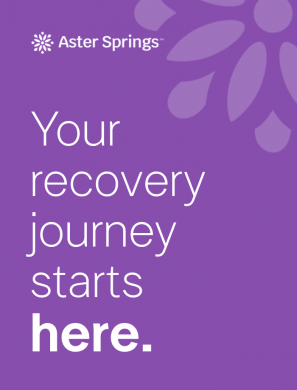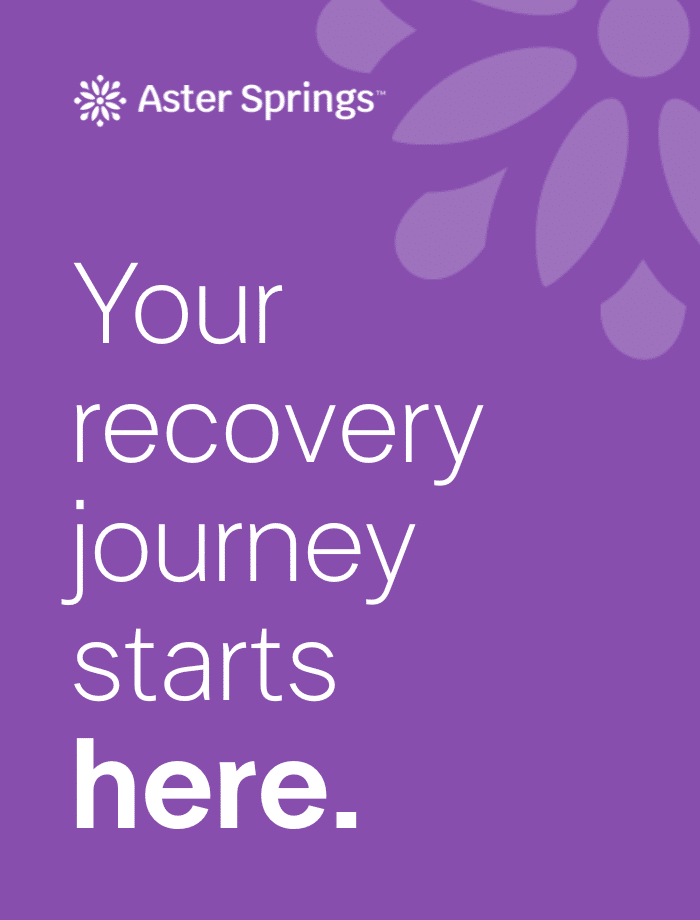Body checking may seem harmless — just a quick glance in the mirror, a pinch at the waist, or a weigh-in “just to be sure.” But beneath these seemingly routine behaviors lies a powerful psychological mechanism that can both drive the onset of an eating disorder and silently sabotage recovery. Far from being neutral, body checking is a compulsive behavior rooted in anxiety and distorted body image, reinforcing the very fears and insecurities that fuel disordered eating.
Research has repeatedly shown that body checking isn’t just a symptom of eating disorders — it’s a maintenance factor. It strengthens the cognitive distortions around shape, weight, and self-worth, making recovery more fragile and relapse more likely. Even when overt behaviors like restriction or purging have stopped, unchecked body checking can keep the disorder alive beneath the surface.
In this blog, we’ll examine the science behind body checking, explore its role in the development and relapse of eating disorders, and highlight why addressing it is essential for full, lasting recovery.
What Is Body Checking?
Body checking is a behavior that involves repeatedly observing, measuring, or touching one’s body in an effort to assess size, shape, weight, or perceived changes in appearance.
From a clinical perspective, body checking is recognized as a common feature of many eating disorders and a driver of body image disturbance.
Examples of Body Checking
Body checking can occur in both obvious and subtle ways because it exists on a spectrum — ranging from deliberate, intentional actions to automatic, often unconscious habits. At its core, body checking is the expression of a desire to monitor, control, or get reassurance about one’s body. That desire can manifest in a variety of ways, depending on an individual’s level of awareness, emotional state, and relationship with their body.
Common examples of body checking include:
- Frequently looking in mirrors to inspect specific body parts
- Pinching or measuring areas like the stomach, thighs, or arms
- Repeatedly weighing oneself, sometimes multiple times a day
- Comparing one's body to others in person or online
- Asking others for reassurance about weight or appearance
- Feeling for bones, protrusions, or “problem areas”
When is Body Checking Harmful?
Body checking becomes harmful when it shifts from occasional self-awareness to a compulsive behavior driven by fear, anxiety, or dissatisfaction.
Here are red flags that indicate body checking is no longer just a habit but a sign of deeper body image distress.
1. It’s Frequent or Compulsive
Checking your reflection, clothes, or body parts multiple times a day
Feeling unable to resist the urge to check
Feeling distressed or anxious if prevented from checking
2. It’s Emotionally Charged
Experiencing strong negative emotions (shame, anxiety, fear, disgust) after checking
Using body checking to regulate emotions or relieve distress
Feeling your mood for the day is determined by the outcome of checking
3. It’s Tied to Self-Worth
Believing your value or success depends on how your body looks
Needing to “earn” food, rest, or confidence based on how your body checks out
Feeling “good” or “bad” about yourself based on appearance alone
4. It Interferes With Daily Life
Avoiding mirrors, events, food, or clothing due to fear of checking outcomes
Spending excessive time or mental energy on checking behaviors
Changing plans, skipping meals, or restricting food after checking
How Body Checking + Eating Disorders Are Connected
The connection between body checking and eating disorders isn’t just a theory — it’s something clinicians and researchers have seen over and over again. In both studies and treatment settings, body checking shows up as a major factor in how eating disorders start, how they stick around, and how they come back after an individual has started to recover.
Whether it’s constant mirror-checking, weighing, or comparing body parts, body checking is often a reflection of deeper anxieties and body image distress — and a powerful behavioral tool that reinforces disordered beliefs.
The link between body checking + eating disorders
1. Body Checking Reinforces Negative Body Image
At the heart of most eating disorders is body dissatisfaction or distortion. Body checking behaviors keep individuals hyper-focused on their physical appearance and often amplify perceived flaws — even if no actual change has occurred.
Research insight: Increased body checking worsens body dissatisfaction and negative emotions in those already concerned about their bodies (Harmann et al., 2024).
When an individual checks their body repeatedly, they’re more likely to notice (or imagine) imperfections, which feeds body dissatisfaction — a well-known risk factor for anorexia nervosa, bulimia nervosa, and binge eating disorder.
2. Body Checking is a Maintenance Factor
In cognitive-behavioral models of eating disorders, body checking is considered a “maintenance factor” — a behavior that not only accompanies the disorder but helps sustain it.
Research insight: Addressing body checking in eating disorder treatment helps break the cycle (Fairburn et al., 2003).
An individual with anorexia might weigh themselves daily to ensure they haven’t gained weight, which reinforces restriction if the number on the scale changes.
3. It Increases Anxiety Instead of Relieving It
Many individuals body check because they’re looking for reassurance — hoping that a quick glance in the mirror, a weigh-in, or a mirror selfie will help them feel calmer and more in control. However, in reality, the opposite usually happens. The more often you check, the more you start to notice (or think you notice) tiny changes that can send your mind spiraling and leave you feeling more “convinced” there’s something wrong with your body.
4. It Fuels Disordered Eating Behaviors
When body checking “confirms” someone’s fear (e.g., they feel bloated or see weight gain), it can trigger disordered behaviors like:
Restricting food intake
Over-exercising
Purging
Skipping meals
Avoiding certain foods or clothes
In this way, body checking can act as a behavioral cue that drives deeper disordered patterns, even if the checking itself seems benign on the surface.
5. It Predicts Eating Disorder Relapse After Recovery
Even after someone recovers physically or reduces harmful eating behaviors, persistent body checking can be a red flag for relapse.
Research insight: Bamford et al. (2014) found that body checking predicted poorer long-term outcomes in eating disorder recovery, including increased risk of relapse.
Subtle checking — like pinching the stomach or adjusting clothing to “test” fit — can maintain cognitive distortions and body preoccupation long after weight has stabilized or eating normalizes.
Addressing Body Checking in Eating Disorder Treatment
Addressing body checking in eating disorder treatment is essential because it’s not just a symptom — it’s often a behavior that actively keeps the disorder alive. In treatment programs like those at Aster Springs, reducing body checking is approached with awareness, compassion, and gradual change so it doesn’t feel overwhelming or unsafe for the individual.
1. Building Awareness of the Behavior
Many individuals don’t realize how often they’re body checking — it can be automatic.
In treatment: Therapists may start by helping clients notice when, where, and how they check their bodies.
Why it helps: Awareness is the first step to breaking the cycle. Some clients track checking behaviors in a journal, noting triggers, emotions, and situations that lead to checking.
2. Exploring the “Why” Behind It
Body checking is rarely just about appearance — it’s often about control, reassurance, or managing anxiety.
In treatment: Clients explore what they’re hoping to gain from checking and whether it actually gives lasting relief.
Why it helps: Understanding the emotional function of body checking makes it easier to replace it with healthier coping strategies.
3. Gradual Reduction (Not Going “Cold Turkey”)
Completely stopping body checking all at once can feel scary.
In treatment: Providers may use behavioral experiments — reducing the frequency, delaying the urge to check, or removing certain “checking tools” like scales.
Why it helps: Gradual change builds confidence and tolerance for discomfort without triggering a strong rebound effect.
4. Exposure + Response Prevention (ERP)
ERP is a borrowed technique from obsessive-compulsive disorder (OCD) treatment, but it can help with addressing the urgency to body check in eating disorder recovery.
In treatment: Clients are gradually exposed to situations that would normally trigger checking (like trying on fitted clothes) but are guided to resist the urge to check afterward.
Why it helps: Over time, the anxiety decreases naturally without the need for reassurance.
5. Replacing Body Surveillance with Body Awareness
Recovery isn’t about avoiding your body entirely — it’s about relating to it differently.
In treatment: Clients practice mindful movement, body-neutral language, or grounding techniques to reconnect with their body based on how it feels, not how it looks.
Why it helps: This shift supports a more peaceful, less judgmental relationship with the body.
6. Addressing Cognitive Distortions
Body checking is often tied to distorted beliefs (“If my jeans feel tighter, I’ve gained weight, and that’s bad”).
In treatment: Therapists use cognitive restructuring to challenge these thoughts and replace them with balanced, compassionate perspectives.
Why it helps: Changing the underlying thought patterns makes checking less compelling.
7. Removing or Limiting Triggers
Some environments and habits feed the checking cycle.
In treatment: This might mean removing the scale from home, covering mirrors, unfollowing triggering social media accounts, or wearing clothes that feel comfortable and less “testable.”
Why it helps: Fewer triggers make it easier to focus on healing without constant temptation.
In eating disorder treatment, addressing body checking is about more than just “stopping a habit.” It’s about untangling a deeply ingrained behavior, understanding its emotional roots, and replacing it with healthier ways of relating to the body. With the right support, reducing body checking can lower anxiety, improve body image, and create space for true, lasting recovery.
Hope for Lasting Recovery
Body checking may seem like a small or harmless habit, but it carries significant psychological weight. It fuels body dissatisfaction, reinforces disordered thought patterns, and increases the risk of relapse — long after physical symptoms have improved. That’s why identifying and addressing body checking should be an essential part of any comprehensive eating disorder treatment plan.
Take the First Step Toward Healing
At Aster Springs, we provide specialized treatment for eating disorders and body image concerns at every level of care, including residential treatment, partial hospitalization, and intensive outpatient programs. Our expert team blends evidence-based therapies such as cognitive behavioral therapy (CBT) and ERP with a compassionate, individualized approach that honors your unique experiences and recovery goals.
If body checking or other disordered eating behaviors are affecting your life, you don’t have to face them alone. Contact Aster Springs today to speak with our admissions team and start your path toward lasting recovery.
References
- Bamford, B., Attoe, C., Mountford, V., et al. “Body checking and avoidance in eating disorders.” Int J Eat Disord, vol. 47, no. 5, 2014, pp. 485–490.
- Fairburn, C. G., Cooper, Z., et al. “Enhanced cognitive behavior therapy for eating disorders.” Behav Res Ther, vol. 41, no. 5, 2003, pp. 509–528.
- Hartmann, A. S., Vocks, S., et al. “The effects of body checking on body dissatisfaction, drive for thinness, and negative affect.” PLoS One, vol. 19, no. 6, 2024, e0316190.



